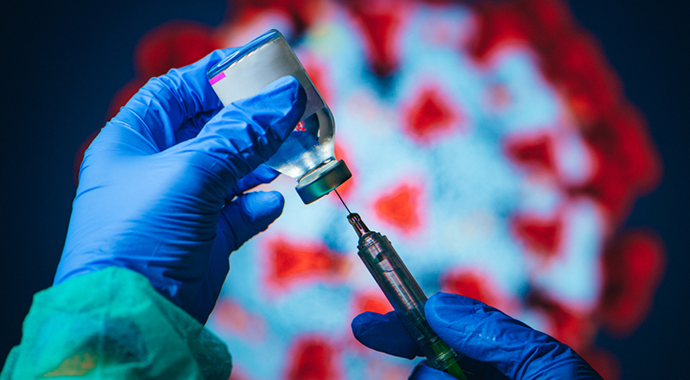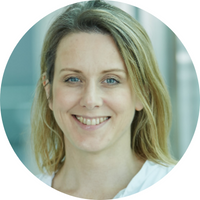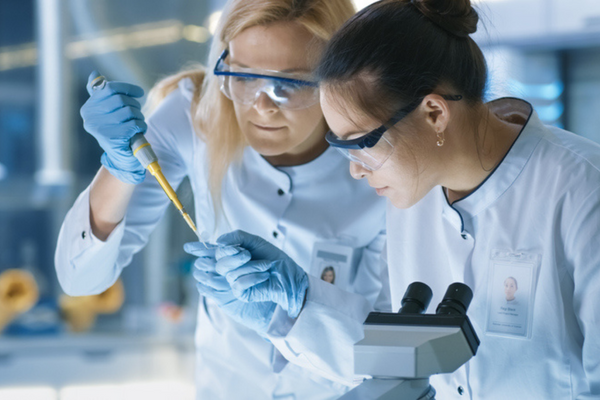
Key Takeaways:
- What Sarah Skerratt keeps top of mind when leading a project / people
- What it takes to develop effective medicines to treat neurodegenerative diseases
- Skerrat's personal perspective of the industry-academic partnership environment
If I had told you in 2019 that the biopharma industry was capable of developing, producing, and launching a vaccine for world-wide use – and receive full FDA approval – in a total of about 18 months, you would have responded how? What are some noteworthy implications of this achievement for the future of biopharma?
I would have said “Wow, that is incredible!” And the response to COVID-19 was truly remarkable. For the first time, the global life sciences ecosystem was mobilized to combat a threat to human health on a pandemic scale, and was able to deliver innovative vaccines, therapeutics, diagnostics, and methods to monitor and track viral variants in record time. This has saved millions of lives worldwide and will continue to save lives as we navigate our way out of the pandemic.
This astounding achievement has been made possible by unprecedented levels of collaboration among industry, academia, medical research charities, regulators, and government agencies. At MSD, we’re looking at ways of applying the “COVID-19” blueprint to tackle other devasting disorders, such as dementia and cancer.
You have held senior leadership positions at MSD, Vertex, and Convergence/Biogen. What are some of the major challenges in that first year with a new company?
The first year at a new company is an exciting and important time. Building a network of colleagues across disciplines and sites is a key part of the first few months, this can be challenging, especially if teams are situated across multiple geographic locations; but going the extra mile to build trust and mutual respect will enable productive relationships to be forged. Taking time to learn the science and spending time with the team is key: the ability to understand the opportunity space within an organization relies on a critical appreciation of an organization’s science, people, pipeline, and culture.
People are always the most important asset in any organization, and ensuring colleagues have opportunities to grow and thrive should be a central tenet of any leader’s vision and strategy. Within the first few months, it’s important that the team gets to know you as a scientist and a leader. I have found that being transparent and authentic is critical in enabling a sense of trust within any new team. It’s important to share your vision for the organization as soon as you have built and aligned around it. It’s also important to share where you feel the organization is doing well and where there are opportunities to grow and develop.
Maintaining your enthusiasm, curiosity, and drive to facilitate the science is critical, but above all, enabling the people in your team to feel empowered and valued is the key to leading a successful team.
You have led projects and people in your roles to-date. What do you keep front of mind when leading a project? And similarly, what is paramount in your thoughts when leading people?
I have been fortunate enough to work on some amazing project teams over the years, some of which have taken molecules through to the clinic. Leading programs and teams is a privilege and a position of immense responsibility. As a program lead, striking the right balance of providing strategic guidance and scientific input, while enabling others in the team to innovate and drive the science, is critical. A program lead should enable all team members to contribute their ideas and encourage healthy debate to drive to the best outcomes. With respect to leading people, I see my role as creating an environment that fosters creativity, innovation, a sense of belonging and a place where team members can grow. Being able to develop teams is something I am passionate about, and I love seeing talented scientists grow and advance in their careers.
On a related note, your role requires you to do so many things effectively: lead projects and people, communicate effectively, make good decisions, develop strategy, provide financial stewardship, and oversee operations, to name a few. Which of these came most naturally to you? And which required the greatest amount of time and effort to get up to speed?
My role does involve wearing a few different hats! The opportunity to work with colleagues outside of my core scientific skill set has certainly enabled me to have a broader strategic view of the business and an enhanced understanding of what it takes to bring a promising biological hypothesis through to a therapeutically relevant commercial asset. We can’t and shouldn’t “do everything”, so we collaborate with experts across the organization (e.g., finance, operations and business strategy, to name but a few) to ensure the very best molecules we make have the opportunity to be delivered to patients in an expedient and efficient way.
With respect to your scientists at MSD, what non-technical skills do you most highly value?
I am very fortunate to work with scientists at MSD who are talented, creative, and passionate about delivering medicines to patients, and recognize the value of teamwork. Drug discovery is a team sport and only by working collaboratively and in multi-disciplinary teams will we have the expertise and know-how needed to get an initial biological hypothesis through to a safe and efficacious medicine.
I value that commitment to teamwork and collaboration. Great teams do great things. Great teams trust and respect each other, have a shared sense of purpose and a “reach for the stars” mentality. Great teams comprise individuals who are honest, humble, and strive to deliver innovative and transformative science in a collaborative way. Resilience is key, and having a strong support network of peers, mentors, allies, and leaders, who can really help colleagues - at all levels - navigate those times when drug discovery efforts don’t go to plan is critical.
Great scientists tend to be curious, courageous, and lifetime learners. Embracing diversity in all forms supports innovation, which is what we’re all about. Great scientists are also great communicators, able to share their ideas and elevate them through collaborative discussion to deliver real breakthroughs. In drug discovery, it “takes a village”.
Splitting the atom, putting a person on the moon, and developing vaccines were tremendous technical achievements. Compared to them, how would you assess the level of difficulty in attempting to develop effective medicines to treat Alzheimer’s and other neurodegenerative diseases?
The road to delivering disease-modifying therapies for neurodegenerative disorders has been a long one, but researchers in the field remain truly optimistic about the future of neuroscience research.
Recent advances in our understanding of the molecular mechanisms that give rise to devastating diseases such as Alzheimer’s, Parkinson's and Amyotrophic Lateral Sclerosis have been enabled through the increased availability of human-derived experimental systems (e.g., patient tissues or induced pluripotent stem cells) and more routine access to human genetics, functional genomics and machine learning capabilities. We now better understand the mechanistic hallmarks of neurodegenerative diseases and hence are better placed to identify the most promising points of therapeutic intervention.
Key to clinical success is the availability of translational biomarkers and imaging tools that allow us to understand levels of target exposure, target engagement and pharmacological efficacy, in both the preclinical and clinical setting. Multiple consortia, whose partners span industry, academia, and medical research charities, are working to deliver the much-needed translational toolsets to enable thorough testing of biological hypotheses and progress is being made that will enable many aspects of CNS biomedical research in the future. We also have an expanding CNS modality toolbox, outside of standard small molecules (e.g., vaccines, antibodies, proximity-induced degraders), that is increasing our ability to address complex biological targets that can’t be addressed via conventional approaches.
It’s an exciting time to be working in neuroscience: the field of wearables and other digital health technologies to monitor patients with neurodegenerative disorders in real-time is not only enabling clinicians to better monitor the efficacy of therapeutics in individual patients, but the data taken across patient clinical cohorts and in real-world settings is enabling AI-models to more effectively characterize acute and chronic CNS diseases.
Finally, with the recent FDA approval of Aducanumab, the biopharmaceutical spotlight has refocused on CNS disorders and the remaining challenges and opportunities in this field of research. I am confident that with our increased understanding of the underlying causes of neurogenerative disorders and our enhanced ability to study and monitor these in cellular systems in the laboratory and in patients, there will be breakthrough medicines that will treat many neurodegenerative disorders in the not-too-distant future.
What technology trends are you following most closely, with an eye toward how they may impact the work of your scientists, and your company’s growth?
There have been many recent advances in our understanding of human disease biology and how to best modulate a target to deliver a clinically relevant phenotype.
I feel we are better equipped than ever to be able to tackle very difficult disease areas and deliver medicines for the patients in need of them. More than ever before, we work at the interface of biology, chemistry, physics, computation and technology to solve really difficult problems, for example, utilizing advances in AI-assisted bioimaging in clinical diagnostics, or using machine learning and omics techniques to better understand the drivers of human disease.
The recent AlphaFold and RoseTTAFold approaches to predict the structure of proteins from their amino acid sequences is a critical advancement in the field of protein structure predictions. The team at DeepMind used solved structures in the Protein Data Bank as a training set and have developed a pattern-matching neural network system that has delivered protein structure prediction into the hands of the biomedical community. While the lack of accuracy in active site prediction in the AlphaFold system remains a limitation, the future possibilities for drug discovery (e.g. prediction of protein–ligand structures, detection of allosteric or cryptic pockets, prediction of protein–protein, protein–DNA and protein–RNA complexes) are very exciting.
Technology and data sciences are revolutionizing the way we do drug discovery, and the successful teams will be those who harness these cutting-edge techniques.
How would you characterize the current state of the industry-academic partnership environment? Do you see any differences, generally, in the way US academic institutions seek to engage with your company, vs. those in Europe and Asia?
Most companies are more collaborative and outward facing than ever before. At MSD, collaboration is at the heart of what we do, and we collaborate with world-class academic scientists, going where the best science is, irrespective of geography.
Location is important, because it supports connectivity, and the ability to strike-up opportunistic conversations with academics in institutions such as the Francis Crick Institute (London, UK), where my team is currently based, should not be underestimated. Having said that, the on-line communication platforms and data-sharing capabilities the scientific community now has means that we can have a ‘collaboration without borders’ approach to industry-academic partnerships – and we believe strong connectivity can be forged remotely with the right ways of working and time investment.
I understand one of your first jobs was working in a Stilton cheese factory. What were your responsibilities? And did the job turn you off Stilton cheese forever? Turning to present day, what’s the first cheese you reach for if you want to treat yourself?
I did work in a Stilton factory for ~6 months, ahead of starting my PhD, to earn a bit of money. I wrapped up pieces of cheese to be sent out to stores all around the world. It was certainly a “fragrant” job, but I did and still do love Stilton cheese. I think my favourite cheese nowadays is Cambozola, but really, I am pretty much a fan of all cheese, unless it is from a spray can!
You have said you like to cook, and that Italy is a favorite travel destination of yours. Can we conclude that your signature dish is Italian? What is the dish you think you make best?
I do love to cook, and Italian food is a passion of mine. Italy is an amazing place; I would love to go out to Tuscany one day and learn how to cook Italian food properly! I think my signature dish would have to be lasagna. I cook that dish often for family and friends and they seem to like it. I am not sure how truly authentic my “recipe” is though, as it includes things like pesto and red wine and is generally topped with cheddar cheese (as cheddar cheese is omnipresent in our fridge), but it tastes nice!

Dr. Sarah Skerratt is an organic chemist by training, conducting her PhD with Professor J C Anderson at the University of Nottingham before undertaking postdoctoral studies with Professor P A Wender at Stanford University as a visiting Fulbright Scholar. Sarah began her industrial career as a medicinal chemist at Pfizer, UK and has subsequently taken on roles at Convergence and Vertex. Sarah is currently the Head of Chemistry (MSD, London), Executive Director, where she is responsible for leading a multidisciplinary team of pre-clinical scientists, focused on the delivery of novel therapeutics for diseases of ageing.
In her 18 years of drug discovery, she has contributed to the delivery of multiple clinical stage compounds and co-authored > 50 publications and patents. Sarah is an active member of the UK life sciences community, with memberships of several UK scientific advisory boards and a long-standing commitment to teaching early career scientists. In 2021, Sarah was awarded the Royal Society of Chemistry Creativity in Industry Prize.
This article has been edited for length and clarity. The opinions expressed in this article are the author's own and do not necessarily reflect the view of their employer or the American Chemical Society.
Copyright 2022 American Chemical Society (All Rights Reserved)








